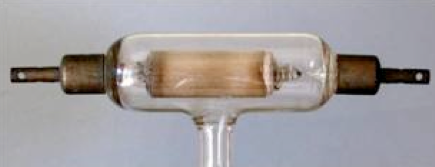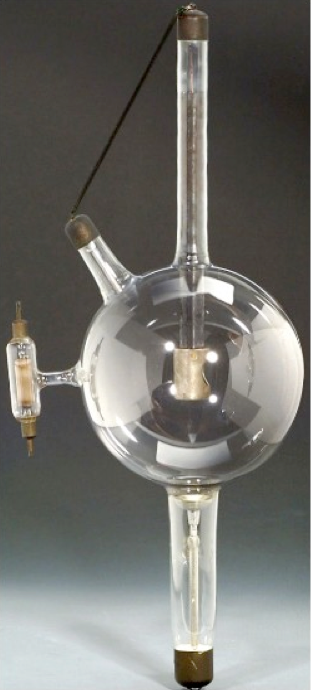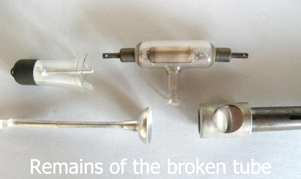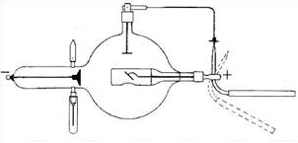Early Hooded Anti-Cathode Tube
Ref. B26







This early cold cathode X-ray tube, bears no maker’s name, but figures in an advertisement by Emil Gundelach, dating to 1910 (E.R.N. Grigg : The Trail of the Invisible Light, p 479, Charles C. Thomas, 1965). The tube dating probably to the first decade, is 23” (58 cm) long with a 7” (18 cm) bulb. The regeneration device is in the small secondary chamber, consisting of concentric semiconductor cylinders, separated by a dielectric material (see X-ray picture above), and connectable, at will, to the cathode and anti-cathode of the tube. This type of regeneration is usually described as the “condenser type”, introduced by Gundelach.
The anode is a small aluminium rod, and the aluminium cathode is of the typical concave type. But the rare and most interesting feature of this tube is the anti-cathode of the heavy type where the target, probably of platinum foil, is of large size, slightly convex, and enclosed inside a large aluminium hood fixed to a ferrous-looking, tube-like and slightly rusty stem. This “hood” was probably intended for a better concentration on the centre of the target of the electron flow coming from the cathode, while providing protection from off-focal radiation. However, this hooded anti-cathode fits perfectly the description of what came to be known a few years later as the “hooded anode”.
With the exception of the Chabaud Tube (1905-1906) which had a hooded anode (anti-cathode), and probably some rare other tubes, as the one shown above, the “hooded anode” stayed practically unknown until it was introduced (or re-invented) by W.D.Coolidge in 1915 after the introduction of the Coolidge type tubes. (Grigg : The Trail of the Invisible Light, pp 79 and 129, Charles C. Thomas, 1965). It was not commonly adopted by the tube industry before the thirties.